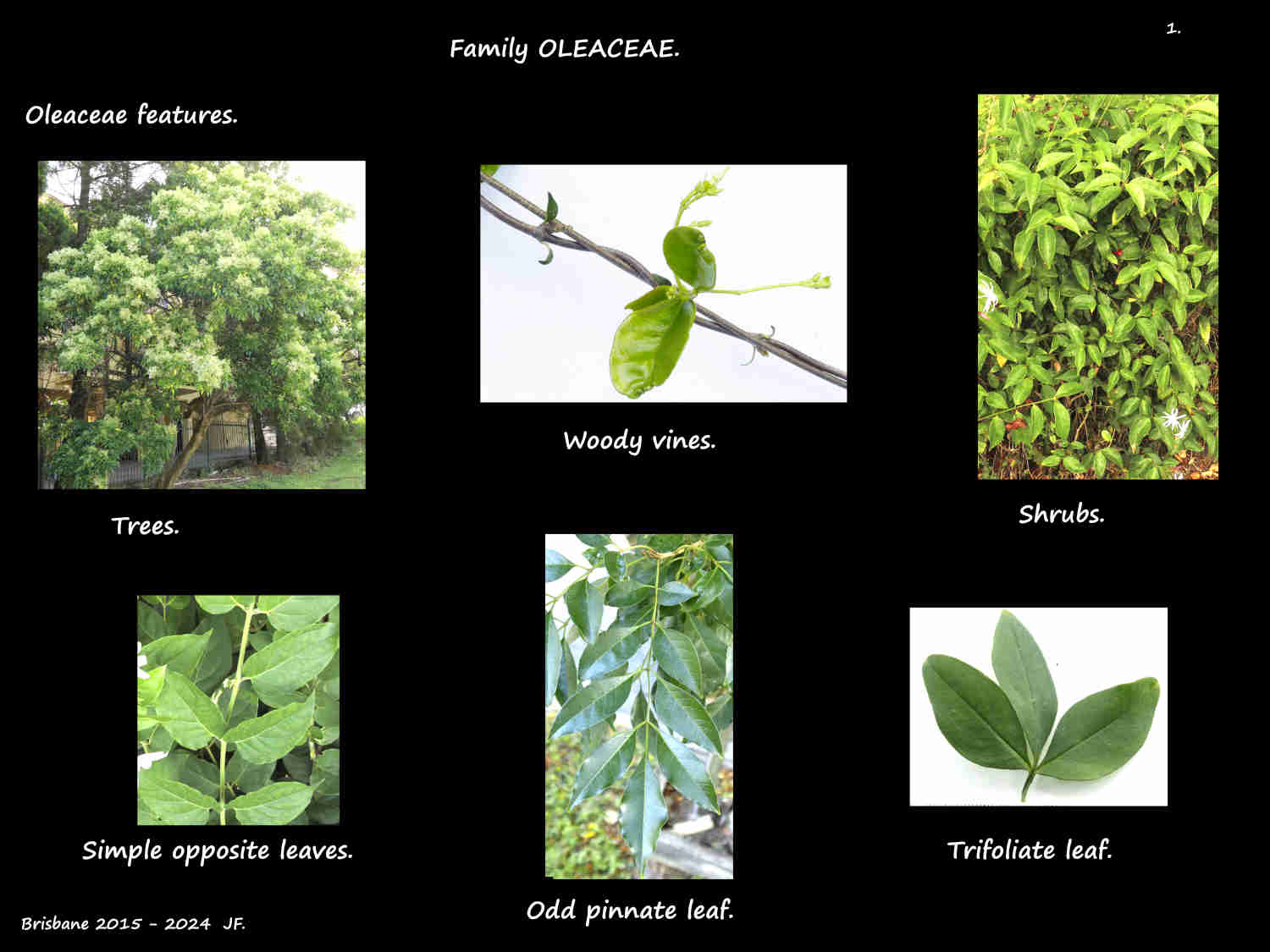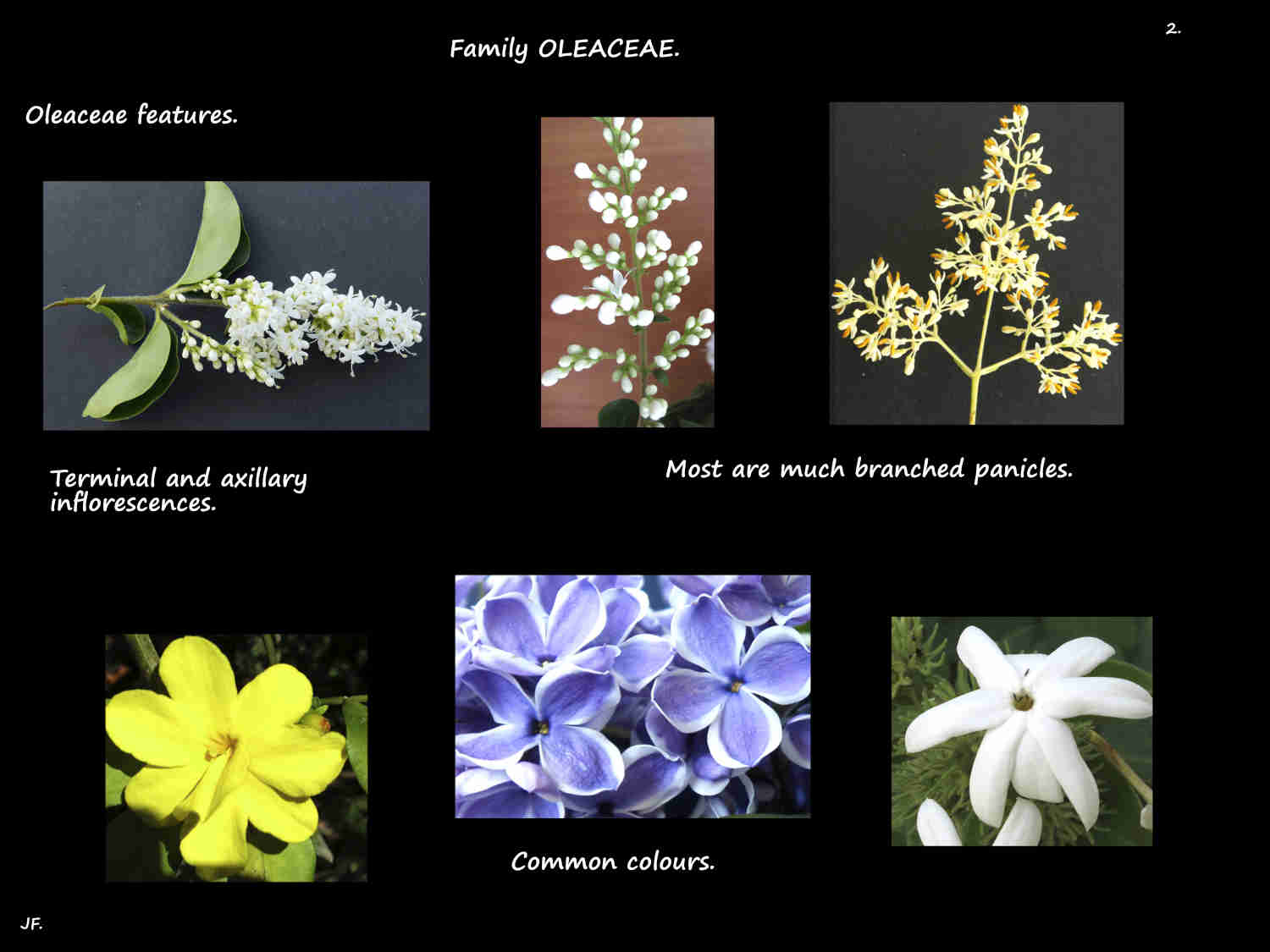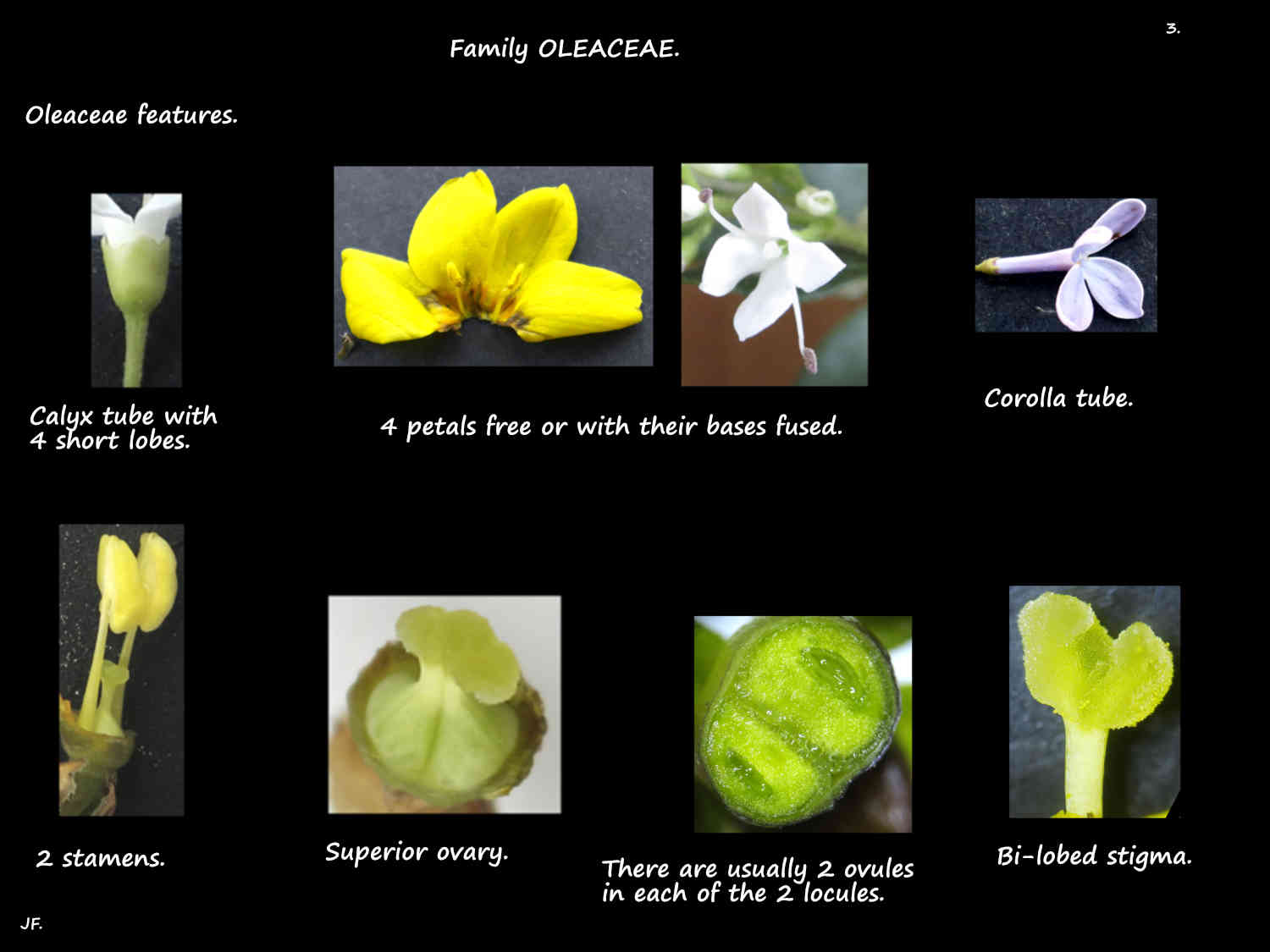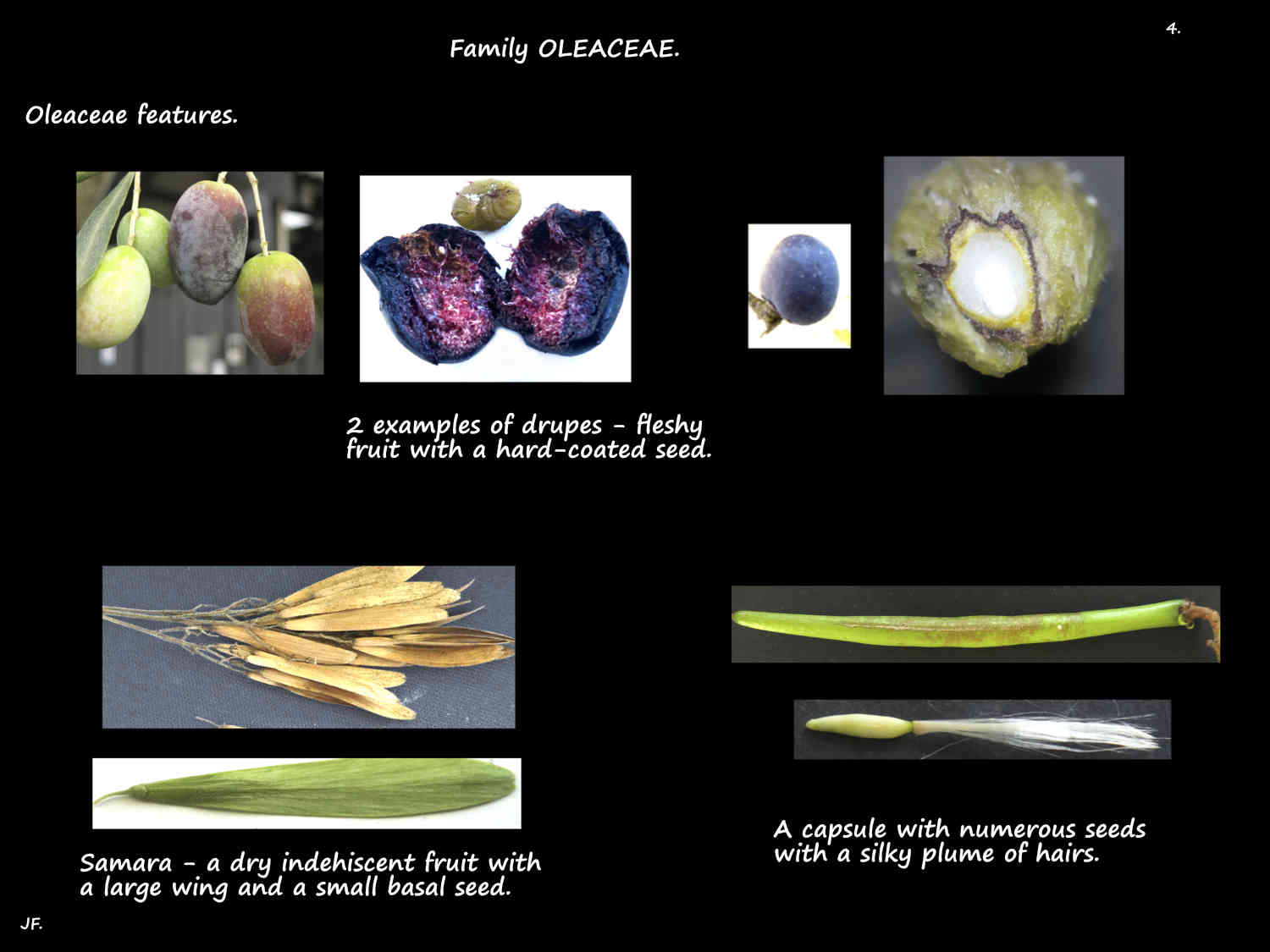Oleaceae.
The Olive (Lilac) family has 29 genera according to Plants of the World Online (Kew).
The number of species ranges from 600 to 900 with the problem being due to the Jasmine genus.
A lot are found in S.E. Asia with others from China, Africa and N. America.
They are divided into 5 tribes one of which has 4 sub-genera.
Australia has around 31 species in 6 genera 4 of which are seen in S.E. Queensland.
Better known genera here include Forsythia, Fraxinus (Ash), Jasminum, Ligustrum (Privet), Osmanthus and Syringa (Lilac).
Most are trees or shrubs but there are some herbs and a few woody vines (twiners and scramblers).
The almost always opposite leaves are on a petiole that may have a swollen base.
The deciduous or evergreen leaves can be simple, trifoliate or pinnate with an odd terminal leaflet.
The edges may have fine blunt or sharp teeth.
Six genera have plants with trichomes that can be a pit and/or hairs in the lower vein axils.
Some of the hairs have a gland with the hair attached towards the centre of the gland (peltate).
Sparse to dense straight or curly hairs may also be found on young twigs, inflorescence stalks, sepals and the ovary.
Axillary or terminal flowers can be solitary or in branched clusters, often with bracts and bracteoles.
The often white, yellow or purple mostly bisexual flowers are radially symmetric.
There are typically 4 small sepals with their bases fused but there can be none or up to 15.
Occasionally there are no petals but mostly 4 (12) that are free or basally fused.
There are 2 (rarely 4) stamens that may be free of, or attached to the corolla.
The dorsi or basi-fixed anthers open inwards through longitudinal slits.
The ovary, of 2 fused carpels has 2 locules each with 2 (1 to many) ovules.
Ovules are attached to the top of the locule or the central axis.
The single apical style usually has a bi-lobed stigma but it may be head-like.
Fruits can be a berry, drupe, loculicidal capsule or a samara.
J.F.





